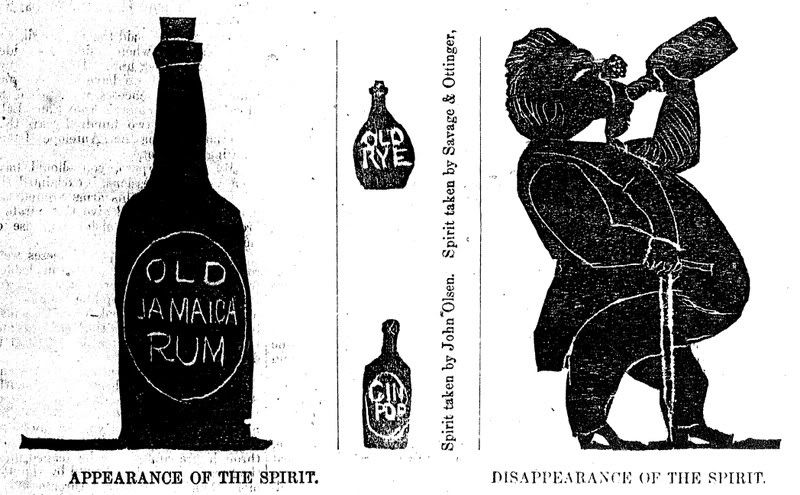Charles William Carter was Salt Lake’s most experienced photographer in 1870, so it was business as usual when a young mother chose his Main Street studio to make a portrait of her little daughter. Carter posed the child, stepped behind his big camera, and exposed the glass plate from which the photograph would be printed. He told his customer the portrait would be ready the next day, and she left his studio with no idea that overnight her daughter’s picture would become the center of Salt Lake’s attention.
When Carter processed the photograph, he found the likeness of a little girl, as expected. But behind her, a little to her left, appeared the faint image of a man whom visitors to his studio recognized as a recently deceased military man, Captain W.R. Storey.
News of the ghostly appearance spread rapidly, and soon people were streaming into Carter’s studio to look at the mysterious photograph. Editors of the Salt Lake Tribune, then in its infancy and still only a weekly newspaper, took a special interest in the image: Many of their supporters had recently abandoned Mormonism for spiritualism and were openly discussing communication with the dead. The cautious Tribune made no otherworldly claims for the photograph, but questioned Carter closely as to the sources of his photographic material and the technical processes of photography. Satisfied that the image was no trick, the Tribune expressed confidence that an explanation would soon be found; “we mention it as a peculiar occurrence which has attracted considerable attention in this city.”
The public at large – not burdened as the Tribune’s editors were by a printed record that might later make them look foolish – freely speculated on the image’s origin. Carter “had succeeded in photographing a spirit from the other world,” ran popular rumor, and his “gallery is haunted by spirits from the other world.”
 Others, more skeptical, were convinced that another kind of spirit was involved. Comic newspaper The Keepapitchinin – the original, not me – published its own “spirit pictures”: A later issue of The Keepapitchinin contained a letter from a soul in Purgatory who had neglected to have his picture taken while on earth; he pleaded with his readers to have their own portraits made so that his lost soul could appear in the background.
Others, more skeptical, were convinced that another kind of spirit was involved. Comic newspaper The Keepapitchinin – the original, not me – published its own “spirit pictures”: A later issue of The Keepapitchinin contained a letter from a soul in Purgatory who had neglected to have his picture taken while on earth; he pleaded with his readers to have their own portraits made so that his lost soul could appear in the background.
Photographer Carter, who had learned his craft before emigrating from England and who understood the technical process of photography as well as anyone, surely recognized a case of double exposure when he saw one. But he was also a canny businessman – his customer’s portrait was ruined anyway, so why not play along with the public’s craving for mystery? The sensation made his studio one of the most popular spots in Salt Lake for a few days. Carter carefully refrained from claiming an otherworldly origin for his photograph, but he also neglected to describe the nature of double exposures.
Charles R. Savage and George M. Ottinger, partners in their own photographic studio, soon stole the thunder from their rival, however. They had their own copy of the Storey portrait. Ottinger sat for a portrait, which was printed with the same ghostly image of Storey peering from behind. The Tribune made no mention of the duplicated apparition, but their own newest rival, the Salt Lake Herald, gleefully proclaimed “The Sensation Spoiled.” The Herald explained in layman’s terms how the feat had been accomplished, and piously stated that to perpetuate any other claim “would be cruel to the parents” of the little girl in the first photograph, “and wrong to the public.”
Halloween night sees the annual reappearance of ghosts on our streets, as real – and as unreal – as the one photographed in Salt Lake in 1870. Be careful out there …
Continue reading at the original source →



